For a printable version of newsletter, click here.
BLACK DEATH CLIMATE CHANGE
We’d left off predicting horrendous terror on our voyage from the Early to the High Middle Ages.
Having traveled from Lentz Spelt Farms on the Columbia Plateau to a crowded Germany, Lena Lentz Hardt has to wonder – she’s learned of Leibeigene serfdom and crusade-crazed pilgrimage wars and hunger years of a population explosion –, what could possibly be so much more abysmal for her relatives of yore?
Corpses flying through the air.
Yes, as medieval lives had unfolded from generation to generation, farmers’ freedom had again expanded toward the original ideal, and some had even become prosperous amid a general population more mobile, and though it wasn’t a panacea – the feudal system still in place, pope and kings still marching to wars and burdening the population with heavy taxation –, rural folks had arrived at a certain degree of optimism on a midway path between suppression and hopeful liberty. Well, maybe optimism is too strong a word in the case of the farmers, let’s say they sensed an upbeat undercurrent.
So it was like a lightning strike out of the blue that – KABOOM – the world ended. Apocalypse now.
Hurled corpses: the medieval version of biological warfare.
*****
Nor is globalization a recent invention. Trade was making merchants rich, and they wanted to get richer. And richer: after all, the demand kept increasing for silk from China, spices from India, amber from the Baltic, etc. etc. Fortresses in strategic places secured the trade routes. For the Genoese merchants, Caffa was one of those strongholds, Caffa (today’s Theodosia/Feodosija) on the Black Sea Crimea. From Caffa the Genoese transported their trade goods back to Italy by ship, Genoa’s sailors a notably skilled set (Christopher Columbus was born there).
In 1347 the Genoese hold on Caffa was challenged. According to Gabriele de’ Mussi, a contemporary notary near Genoa, Caffa had been under siege by Tartars and Saracens when sickness struck the Mongol attackers. The consensus among modern historians is that this sickness, which exploded into an epidemic – “mountains of dead,” Mussi wrote –, was brought to Caffa by the Tartar troops who’d been infected at points east.
The war machine catapults of the time were plenty powerful. The besieging Tartars got rid of their infected dead by launching them over the walls into Caffa. A grisly image, isn’t it, the dead men’s limbs flailing, their diseased faces a rictus grin as they slam down inside the walls. This wasn’t the first time that corpses were thus catapulted – even back then the effects of biological mayhem were known throughout Europe –, but the flung cadavers of Caffa constitute the most devastating biological warfare of all time.
Messina, October 1347: the Sicilian harbor is a lively place as usual when 12 galleys arrive from Caffa. But those galleys when they dock are anything but lively, their crews deathly ill,
too sick to make it off the ships. When one sailor does stumble onto the wharf, he sneezes onto Europe a curse of gargantuan proportions.
Having traveled from Lentz Spelt Farms on the Columbia Plateau to a crowded Germany, Lena Lentz Hardt has to wonder – she’s learned of Leibeigene serfdom and crusade-crazed pilgrimage wars and hunger years of a population explosion –, what could possibly be so much more abysmal for her relatives of yore?
Corpses flying through the air.
Yes, as medieval lives had unfolded from generation to generation, farmers’ freedom had again expanded toward the original ideal, and some had even become prosperous amid a general population more mobile, and though it wasn’t a panacea – the feudal system still in place, pope and kings still marching to wars and burdening the population with heavy taxation –, rural folks had arrived at a certain degree of optimism on a midway path between suppression and hopeful liberty. Well, maybe optimism is too strong a word in the case of the farmers, let’s say they sensed an upbeat undercurrent.
So it was like a lightning strike out of the blue that – KABOOM – the world ended. Apocalypse now.
Hurled corpses: the medieval version of biological warfare.
*****
Nor is globalization a recent invention. Trade was making merchants rich, and they wanted to get richer. And richer: after all, the demand kept increasing for silk from China, spices from India, amber from the Baltic, etc. etc. Fortresses in strategic places secured the trade routes. For the Genoese merchants, Caffa was one of those strongholds, Caffa (today’s Theodosia/Feodosija) on the Black Sea Crimea. From Caffa the Genoese transported their trade goods back to Italy by ship, Genoa’s sailors a notably skilled set (Christopher Columbus was born there).
In 1347 the Genoese hold on Caffa was challenged. According to Gabriele de’ Mussi, a contemporary notary near Genoa, Caffa had been under siege by Tartars and Saracens when sickness struck the Mongol attackers. The consensus among modern historians is that this sickness, which exploded into an epidemic – “mountains of dead,” Mussi wrote –, was brought to Caffa by the Tartar troops who’d been infected at points east.
The war machine catapults of the time were plenty powerful. The besieging Tartars got rid of their infected dead by launching them over the walls into Caffa. A grisly image, isn’t it, the dead men’s limbs flailing, their diseased faces a rictus grin as they slam down inside the walls. This wasn’t the first time that corpses were thus catapulted – even back then the effects of biological mayhem were known throughout Europe –, but the flung cadavers of Caffa constitute the most devastating biological warfare of all time.
Messina, October 1347: the Sicilian harbor is a lively place as usual when 12 galleys arrive from Caffa. But those galleys when they dock are anything but lively, their crews deathly ill,
too sick to make it off the ships. When one sailor does stumble onto the wharf, he sneezes onto Europe a curse of gargantuan proportions.
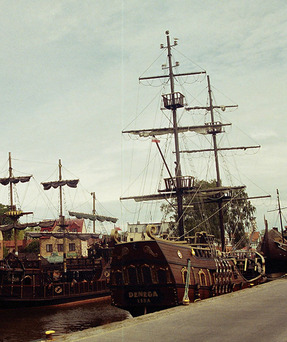
Mussi has the ships with infected people from Caffa arrive at various ports in Italy; modern research confirms the biological warfare at Caffa, but suspects that the pathogen took more paths into Europe than merely on a few ships anchoring in Italian ports. The certain fact is that the bubonic plague – Yersinia pestis – spread from the Crimea into Europe and also to Egypt and on from there.
“The Great Mortality” the people called it: The Black Death.
With the enormous population growth of the previous centuries, epidemics such as small pox had become a scourge upon the land, especially in hunger years. But the Black Death was more than an epidemic, it was truly a plague. The most awful of its horror is how easy the statement rolls off the tongue, “millions died.”
Each of the 125 million to 200 million the Black Death claimed (globally, counting up to the 1700s) was a human suffering enormous pain. Exact numbers don’t exist; in part this is because no census was taken in medieval centuries, in part it’s because the Black Death plague overlapped with outbreaks of pox, fevers, typhus, dysentery; and cholera followed soon after. Also, the plague caused more devastation in some regions than in others, Poland for one was largely spared, and, this pestilence would recur on smaller scale in Europe until 1720 in Marseille, which outbreak is acknowledged as the last instance. (Not so on other continents: the “Third Plague” ravaged China beginning in 1865; San Francisco suffered bubonic plague outbreaks 1900 to 1904, and 1907/08. In fact, unlike small pox and some other diseases that have been eradicated by modern medicine, Yersinia pestis is still around, a drug-resistant strain no less was documented in 1995 on Madagascar.)
The Yersinia pestis strain of 1347 must have been an extremely virulent one, because the Black Death distinguished itself by its suddenness and extreme infectiousness. Victims died within two to seven days. Within a very short time, putrid corpses piled up. Death became so cheap that the honorable ceremony of burial was abandoned, the dead were dumped into hastily dug ditches. Corpses stacked like cordwood: as many as half the population perished in short order.
“The Great Mortality” the people called it: The Black Death.
With the enormous population growth of the previous centuries, epidemics such as small pox had become a scourge upon the land, especially in hunger years. But the Black Death was more than an epidemic, it was truly a plague. The most awful of its horror is how easy the statement rolls off the tongue, “millions died.”
Each of the 125 million to 200 million the Black Death claimed (globally, counting up to the 1700s) was a human suffering enormous pain. Exact numbers don’t exist; in part this is because no census was taken in medieval centuries, in part it’s because the Black Death plague overlapped with outbreaks of pox, fevers, typhus, dysentery; and cholera followed soon after. Also, the plague caused more devastation in some regions than in others, Poland for one was largely spared, and, this pestilence would recur on smaller scale in Europe until 1720 in Marseille, which outbreak is acknowledged as the last instance. (Not so on other continents: the “Third Plague” ravaged China beginning in 1865; San Francisco suffered bubonic plague outbreaks 1900 to 1904, and 1907/08. In fact, unlike small pox and some other diseases that have been eradicated by modern medicine, Yersinia pestis is still around, a drug-resistant strain no less was documented in 1995 on Madagascar.)
The Yersinia pestis strain of 1347 must have been an extremely virulent one, because the Black Death distinguished itself by its suddenness and extreme infectiousness. Victims died within two to seven days. Within a very short time, putrid corpses piled up. Death became so cheap that the honorable ceremony of burial was abandoned, the dead were dumped into hastily dug ditches. Corpses stacked like cordwood: as many as half the population perished in short order.
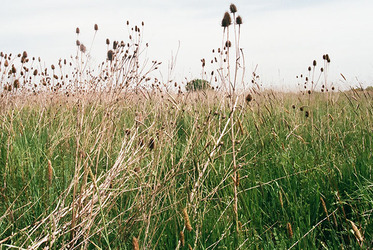
This Yersinia pestis was not the first such pandemic, a previous one seems to have spread from Constantinople in the 6th and 7th centuries. But the bubonic plague outbreak that had almost all of Europe in its grip by 1353 was the worst of the pandemics, estimates of that one pestilence alone run as high as 50 million European dead in a matter of four years.
Some scientists contest the Yersinia pestis version of the Black Death. Were there enough rats to transport so very many infectious fleas? Aren’t the described symptoms also consistent with anthrax? What about a hemorrhagic plague similar to Ebola? What these hypotheses do not change is the horrendous death rate, rapid and terrifying.
Of the 170,000 settlements in German-speaking lands before 1350, over 40,000 were but ruins a hundred years later. Another source states that Germany’s population density of 1320 would not be regained for over 250 years. One historian notes that high-tech scanning from low-flying aircraft amplifies our knowledge of the Black Death era: “... buried fence lines and church foundations appear like impact craters” on the scans.
*****
German historians, so complains one in their midst, tend to marginalize the Black Death and instead focus on the developments of new ideas at the time, as though Petrarch’s climb of Mount Ventoux in 1336 was of greater significance. As for the regional pandemics that followed, many historians simply think of the whole period as one of acutely high mortality rate. But in some aspects the later outbreaks were different: whereas the mid-1300s Black Death was an equal opportunity killer, the later Yersinia pestis claimed more victims in cities than in rural areas, and, after the Reformation, it killed more Catholics than Protestants.
No sense in guessing how Europe’s history would have developed without the shock wave of the Black Death, so tremendous was the psychological impact. Contemporary scholars identified it as pestilentia totius mundi, “the pestilence of the whole world,” and it wasn’t long before the people’s grief escalated to world’s-end sentiment.
Some scientists contest the Yersinia pestis version of the Black Death. Were there enough rats to transport so very many infectious fleas? Aren’t the described symptoms also consistent with anthrax? What about a hemorrhagic plague similar to Ebola? What these hypotheses do not change is the horrendous death rate, rapid and terrifying.
Of the 170,000 settlements in German-speaking lands before 1350, over 40,000 were but ruins a hundred years later. Another source states that Germany’s population density of 1320 would not be regained for over 250 years. One historian notes that high-tech scanning from low-flying aircraft amplifies our knowledge of the Black Death era: “... buried fence lines and church foundations appear like impact craters” on the scans.
*****
German historians, so complains one in their midst, tend to marginalize the Black Death and instead focus on the developments of new ideas at the time, as though Petrarch’s climb of Mount Ventoux in 1336 was of greater significance. As for the regional pandemics that followed, many historians simply think of the whole period as one of acutely high mortality rate. But in some aspects the later outbreaks were different: whereas the mid-1300s Black Death was an equal opportunity killer, the later Yersinia pestis claimed more victims in cities than in rural areas, and, after the Reformation, it killed more Catholics than Protestants.
No sense in guessing how Europe’s history would have developed without the shock wave of the Black Death, so tremendous was the psychological impact. Contemporary scholars identified it as pestilentia totius mundi, “the pestilence of the whole world,” and it wasn’t long before the people’s grief escalated to world’s-end sentiment.

The scholars hypothesized that the disease multiplied itself by “poison air rising from the dead;” this got around to the gravediggers who, in some cities, refused to go near the deceased, regardless of how much money they were offered.
In Vienna the Pestjungfrau – “the Virgin of Pestilence” – was observed to hold up her hand every time that the contagion infected yet another victim. “The Pestjungfrau flew through the air like a blue flame,” it was reported, “... and often she was seen emerging from the mouth of a corpse.”
Compounding the end-of-world desperation was that the disease occurred in three different manifestations – tumors on the body, infection in the blood, infection of the lungs.
“Nobody felt like concerning themselves with the future,” one chronicle emphasized. Even wild animals acted strangely. Wolves who’d come out of the Alps to hunt sheep at valley farms, now were observed to turn tail: “They returned into the wild, as though they’d been frightened by an invisible warning signal.”
Noting that people “felt the constant nearness of death as depressive,” one historian speaks of “the mentality of an occupied society.”
*****
There is consensus that a societal divide took shape. On one side a grand elevation of hedonism: “When life is soon coming to an end, why not enjoy it to the fullest?,” so one German historian explains that mind-set. “Luxury, addiction to gambling, idleness and sin were a further expression of the fear of death.”
On the other side, the religious were becoming more devout. They saw Death as a walking skeleton, hooded, wielding a scythe: the Grim Reaper.
Not a specter but even more distressing were processions of flagellants. Even historians of the old school like Paul Frischauer – who refers to the popes as “Holy Father” and conducts linguistic kowtows before every king and Kaiser –, even those historians are perturbed by the flagellant phenomenon. “Groups of men and women, nobody knew where they came from, walked from place to place waving large flags and chanting sinister songs,” Frischauer writes. “They wore black coats, and strange hats on which was shining a red cross. The roads of the German Empire were filled with hundreds and hundreds such processions, and more and more people joined them. When they got close to a city, the church bells were rung and all the city people streamed into the church. There they threw themselves onto the flagstones next to the people from the procession, and flogged themselves for hours while singing songs and prayers; they read out ‘letters fallen from heaven’ that condemned the sinful activities of laity and pastors, and admonished themselves and others to do penance.”
In Vienna the Pestjungfrau – “the Virgin of Pestilence” – was observed to hold up her hand every time that the contagion infected yet another victim. “The Pestjungfrau flew through the air like a blue flame,” it was reported, “... and often she was seen emerging from the mouth of a corpse.”
Compounding the end-of-world desperation was that the disease occurred in three different manifestations – tumors on the body, infection in the blood, infection of the lungs.
“Nobody felt like concerning themselves with the future,” one chronicle emphasized. Even wild animals acted strangely. Wolves who’d come out of the Alps to hunt sheep at valley farms, now were observed to turn tail: “They returned into the wild, as though they’d been frightened by an invisible warning signal.”
Noting that people “felt the constant nearness of death as depressive,” one historian speaks of “the mentality of an occupied society.”
*****
There is consensus that a societal divide took shape. On one side a grand elevation of hedonism: “When life is soon coming to an end, why not enjoy it to the fullest?,” so one German historian explains that mind-set. “Luxury, addiction to gambling, idleness and sin were a further expression of the fear of death.”
On the other side, the religious were becoming more devout. They saw Death as a walking skeleton, hooded, wielding a scythe: the Grim Reaper.
Not a specter but even more distressing were processions of flagellants. Even historians of the old school like Paul Frischauer – who refers to the popes as “Holy Father” and conducts linguistic kowtows before every king and Kaiser –, even those historians are perturbed by the flagellant phenomenon. “Groups of men and women, nobody knew where they came from, walked from place to place waving large flags and chanting sinister songs,” Frischauer writes. “They wore black coats, and strange hats on which was shining a red cross. The roads of the German Empire were filled with hundreds and hundreds such processions, and more and more people joined them. When they got close to a city, the church bells were rung and all the city people streamed into the church. There they threw themselves onto the flagstones next to the people from the procession, and flogged themselves for hours while singing songs and prayers; they read out ‘letters fallen from heaven’ that condemned the sinful activities of laity and pastors, and admonished themselves and others to do penance.”
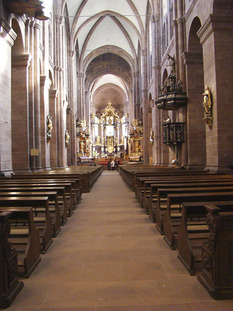
Frischauer quotes the monotone hymn of the flagellants on the road, verbatim: “Now lift your hands, so that God changes this great dying! Now lift your arms, so that God has mercy on us! Jesus, through your threefold name, free us, Lord, from our sins! Jesus, through your red wounds, save us from the horrible death!”
He remarks that a change was occurring in Christian religion – for the flagellants’ “approximately insane piety,” the quiet rites of the church were no longer enough. The nameless leaders of the processions preached that whipping oneself was the true Last Supper of Christ, because the blood of the flagellants would blend with the blood of Jesus.
The flagellants’ shuffle on the roads attracted a bizarre throng of people who walked alongside, crowds of “adventurers, beggars, and unnaturally insane people,” Frischauer writes, commenting that the combination of such hangers-on and flagellants amounted to a socially unsettling state of mind: “This left everyone with the impression that fear and hope, revulsion and God’s blessing... were strangely mixed up.”
*****
Ah, Lentz, what a turn your family story has taken. Of course, it’s all our European forefathers’ history, one way or the other, and seeing how the family trees before the Black Death were quite branched, we can assume a mix of forebear reactions to the end-of-the-world visions of that terrible time.
He remarks that a change was occurring in Christian religion – for the flagellants’ “approximately insane piety,” the quiet rites of the church were no longer enough. The nameless leaders of the processions preached that whipping oneself was the true Last Supper of Christ, because the blood of the flagellants would blend with the blood of Jesus.
The flagellants’ shuffle on the roads attracted a bizarre throng of people who walked alongside, crowds of “adventurers, beggars, and unnaturally insane people,” Frischauer writes, commenting that the combination of such hangers-on and flagellants amounted to a socially unsettling state of mind: “This left everyone with the impression that fear and hope, revulsion and God’s blessing... were strangely mixed up.”
*****
Ah, Lentz, what a turn your family story has taken. Of course, it’s all our European forefathers’ history, one way or the other, and seeing how the family trees before the Black Death were quite branched, we can assume a mix of forebear reactions to the end-of-the-world visions of that terrible time.
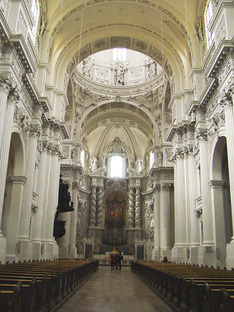
On her trip, Lentz stood on the flagstones of some big cathedrals – now she can fill the naves of those churches with the specter of crowds who whip their own backs to a bloody pulp, banging their heads on those very same flagstones.
Out in the villages, the Dörfer, we must imagine a spooky stillness where too many of the families died to keep on farming. In leaving, the survivors must have felt an overbearing sadness, not only grieving for the relatives swallowed up by the Black Death, but also for the farm, the village, now abandoned after so many generations had worked the land, built the Hof. Turning out the livestock to fend for itself was probably the last act.
*****
Verwüstung is what Germans call the abandonment of farms in the wake of the Black Death: “turned-into-wasteland.”
Out in the villages, the Dörfer, we must imagine a spooky stillness where too many of the families died to keep on farming. In leaving, the survivors must have felt an overbearing sadness, not only grieving for the relatives swallowed up by the Black Death, but also for the farm, the village, now abandoned after so many generations had worked the land, built the Hof. Turning out the livestock to fend for itself was probably the last act.
*****
Verwüstung is what Germans call the abandonment of farms in the wake of the Black Death: “turned-into-wasteland.”
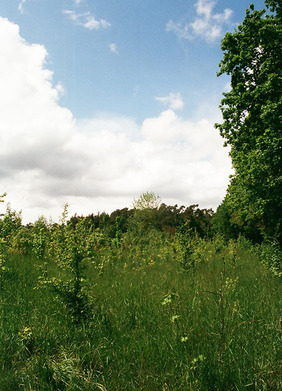
But there is another way of looking at the Black Death aftermath, namely in terms of climate change. If we replace the concept of wasteland with that of reforestation – for that’s what happened, forest reclaiming fallow farms –, we can establish a link between the Black Death and what historians have dubbed the Little Ice Age. Further, we can draw conclusions about the climate change today.
So contends history professor Steven Stoll of Fordham University, citing environmental research by William Ruddiman at the University of Virginia. Ruddiman’s work is based on measurements of methane and carbon dioxide in air bubbles trapped in arctic ice. “Atmospheric carbon declined by a statistically significant 10 parts per million in a period only slightly longer than a single human lifetime.” The period: not long after the outbreak of the bubonic plague in our Middle Ages.
Noting that the Little Ice Age – Europe cooling from the late 1300s until the 19th century – cannot be explained by the same factors that caused the big glacial ages, Stoll extolls the fact that ice bubble measurements show an increase of carbon dioxide and methane from 6000 BC onward, concurrent with agriculture developing. Forest clearing by burns, around the Mediterranean and elsewhere, seems one logical explanation for the carbon increase in the air; methane exhalations by livestock, and from rice paddies would account for the methane rise.
Then the reversal that caused climate cooling: “...by 1400, woody growth had occupied at least 25 percent – and perhaps as much as 45 percent – of arable Europe,” writes Stoll. Worldwide – pandemics occurring in the New World and in Asia and Africa as well – , “hundreds of millions hectares (were) abandoned to reforestation. The rebounding woodland devoured 13.8 billion tons of carbon, accounting for more than half the missing parts per million.” The remaining carbon was gobbled up by the oceans, in loop fashion, the cooling water a more efficient carbon sink than the oceans at previously warmer temperatures.
So contends history professor Steven Stoll of Fordham University, citing environmental research by William Ruddiman at the University of Virginia. Ruddiman’s work is based on measurements of methane and carbon dioxide in air bubbles trapped in arctic ice. “Atmospheric carbon declined by a statistically significant 10 parts per million in a period only slightly longer than a single human lifetime.” The period: not long after the outbreak of the bubonic plague in our Middle Ages.
Noting that the Little Ice Age – Europe cooling from the late 1300s until the 19th century – cannot be explained by the same factors that caused the big glacial ages, Stoll extolls the fact that ice bubble measurements show an increase of carbon dioxide and methane from 6000 BC onward, concurrent with agriculture developing. Forest clearing by burns, around the Mediterranean and elsewhere, seems one logical explanation for the carbon increase in the air; methane exhalations by livestock, and from rice paddies would account for the methane rise.
Then the reversal that caused climate cooling: “...by 1400, woody growth had occupied at least 25 percent – and perhaps as much as 45 percent – of arable Europe,” writes Stoll. Worldwide – pandemics occurring in the New World and in Asia and Africa as well – , “hundreds of millions hectares (were) abandoned to reforestation. The rebounding woodland devoured 13.8 billion tons of carbon, accounting for more than half the missing parts per million.” The remaining carbon was gobbled up by the oceans, in loop fashion, the cooling water a more efficient carbon sink than the oceans at previously warmer temperatures.
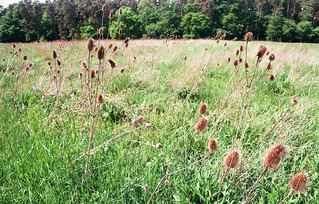
Equally telling is the rebound to a warmer climate later, Stoll emphasizes. “Between 1700 and 1920 the world’s forests lost 537 million hectares.” Add industrial emissions, and the atmospheric carbon levels rise by 100 parts per million between 1750 and today.
Stoll wants to put an end, once and for all, to the climate change debate over whether the current global warming is human-caused or not. Clearly, if inadvertently, the Little Ice Age was human-caused by Black Death mass dying which enabled nature’s reforestation.
What do we learn in this context? That our Age really is the Anthropocene (the term coined by Nobel-Prize-winning Dutch chemist Paul Crutzen in 2000): “Humans figure on a geological scale.” In other words, human populations have increased to levels where human activity makes the weather.
Stoll concludes by paraphrasing Stewart Brand (of Whole Earth Catalog fame): “We are the climate, and we might as well get good at it.”
Stoll wants to put an end, once and for all, to the climate change debate over whether the current global warming is human-caused or not. Clearly, if inadvertently, the Little Ice Age was human-caused by Black Death mass dying which enabled nature’s reforestation.
What do we learn in this context? That our Age really is the Anthropocene (the term coined by Nobel-Prize-winning Dutch chemist Paul Crutzen in 2000): “Humans figure on a geological scale.” In other words, human populations have increased to levels where human activity makes the weather.
Stoll concludes by paraphrasing Stewart Brand (of Whole Earth Catalog fame): “We are the climate, and we might as well get good at it.”
© 2014 Lentz Spelt Farms
- Sources: Von den Archaischen Grundlagen bis zur Schwelle der Moderne, Stuart Jenks / Der Schwrze Tod, Klaus Bergdolt / Das Mittelalter, Paul Frischauer / •

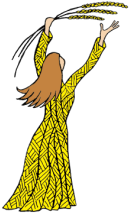

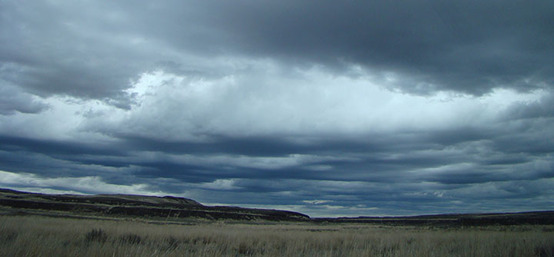
 RSS Feed
RSS Feed